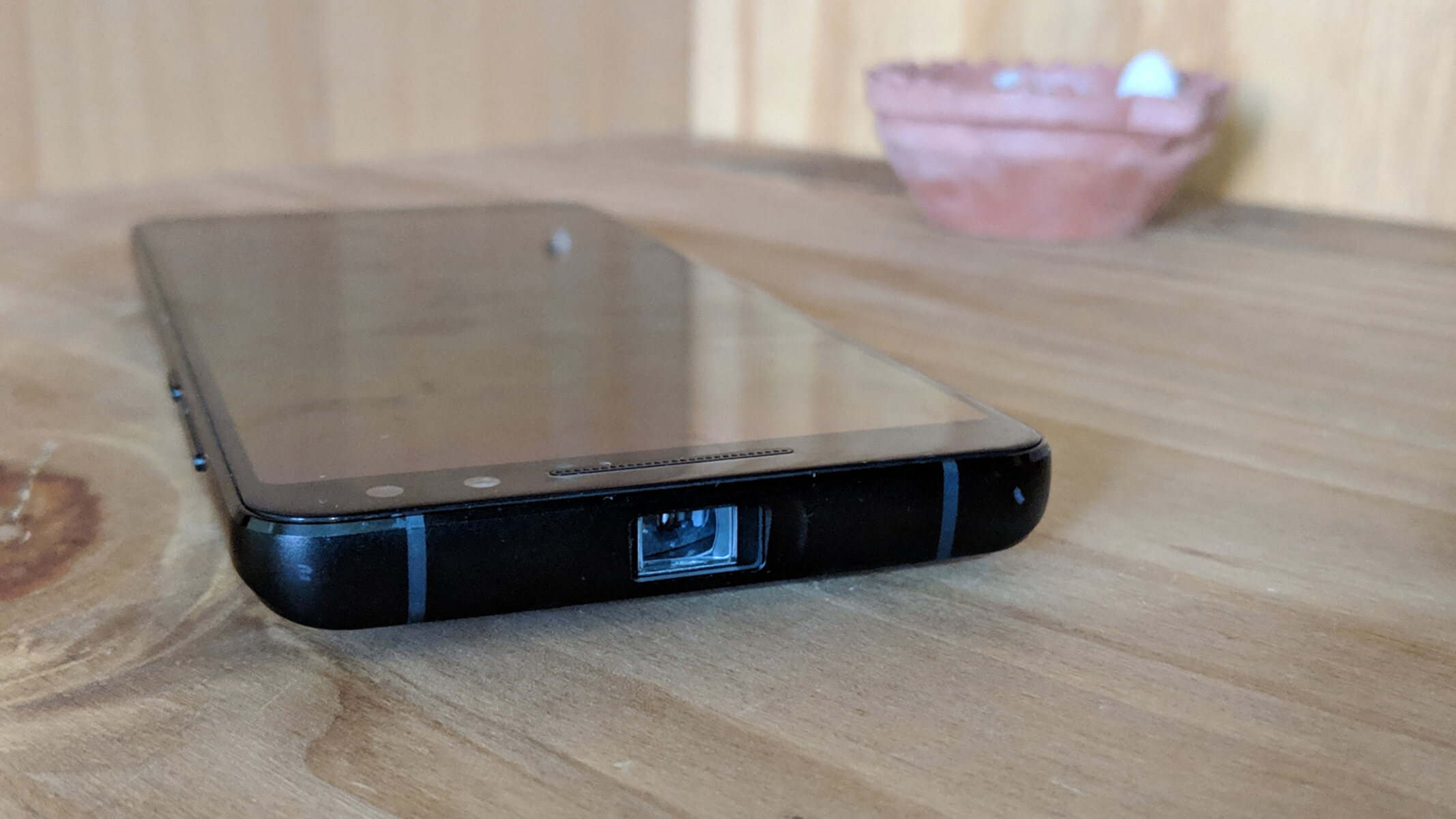Introduction
Welcome to the world of smartphones, where technology meets convenience at your fingertips. These portable devices have become an integral part of our daily lives, connecting us instantly to a world of information, communication, and entertainment. Have you ever wondered what goes into the making of such a sophisticated device? In this guide, we will take you through the process of creating your very own smartphone from scratch.
Building your own smartphone may seem like a daunting and complex task, but with the right materials, knowledge, and a little bit of patience, it can be a rewarding experience. Not only will you gain a deeper understanding of how these devices work, but you will also have a customized smartphone tailored to your specifications.
In this step-by-step guide, we will walk you through the process of designing, gathering components, assembling, and testing your smartphone. From selecting the chassis to installing the operating system, we will cover all the essential aspects of smartphone assembly. While this guide focuses on a DIY approach, it is important to note that building a smartphone requires precision and attention to detail to ensure optimal functionality and performance.
Before we dive into the world of smartphone creation, let’s take a moment to appreciate the advancements in technology that have made these devices an indispensable part of modern life. With each passing year, smartphones continue to evolve, packing more power and capabilities into a compact and sleek design. From stunning high-resolution displays to powerful processors, smartphones have revolutionized the way we communicate, work, and entertain ourselves.
So, if you’re ready to embark on this exciting journey of creating your own smartphone, grab your tools and let’s get started!
Materials Needed
Before you begin the process of building your own smartphone, it’s essential to gather all the necessary materials. Each component plays a crucial role in the functionality and performance of your smartphone. Here’s a list of the essential materials you will need:
- Chassis: This is the outer shell or frame of the smartphone that holds all the internal components together. It provides protection and structural integrity to the device.
- Display: The display is the visual interface of your smartphone. It allows you to interact with the device, view content, and navigate through various applications. Choose a high-resolution display that suits your preferences.
- Processor: The processor is the brain of the smartphone, responsible for executing tasks and running applications. Select a powerful and efficient processor that can handle your everyday usage and multitasking needs.
- Battery: The battery provides the necessary power to keep your smartphone running. Opt for a long-lasting battery with a high capacity to ensure adequate usage time.
- Camera: The camera is a vital component for capturing photos and videos. Depending on your requirements, choose a camera with a suitable resolution and features.
- Memory: The memory of your smartphone determines the storage capacity and the ability to multitask without lag. Consider both internal storage and RAM capacity for a smooth user experience.
- Circuit Board: Also known as the motherboard, the circuit board is the central component that connects all the other parts of the smartphone. Ensure compatibility between the circuit board and other components.
- Operating System: Choose an operating system that suits your needs, such as Android or iOS. Ensure compatibility with the components and the ability to install applications.
- Connectivity Components: This includes Wi-Fi and Bluetooth modules, allowing you to connect to the internet, transfer data, and utilize wireless accessories.
- Tools: Various tools are necessary for smartphone assembly, including screwdrivers, tweezers, and prying tools. These tools aid in the safe and efficient installation of components.
Before purchasing the materials, research and compare different options to identify the best quality and compatibility for your smartphone project. It’s essential to ensure that each component aligns with your desired specifications and budget.
Now that you have a clear understanding of the materials needed, let’s move on to the exciting process of designing your smartphone and gathering the necessary components!
Step 1: Designing the Smartphone
Designing your smartphone is the first and crucial step in the DIY process. It determines the aesthetics, ergonomics, and overall functionality of your device. Before diving into the technical aspects, take some time to visualize and plan the design of your smartphone. Here are the key considerations:
- Form Factor: Decide on the form factor of your smartphone, such as the shape, size, and overall dimensions. Consider factors like portability, comfort in hand, and ease of use.
- Materials: Select the materials for the chassis, keeping in mind durability and aesthetics. Common choices include metal, glass, and plastic. Some DIY enthusiasts even experiment with unique materials like wood or carbon fiber.
- Ergonomics: Pay attention to the placement of buttons, ports, and other essential elements. Ensure easy access and comfortable reach for all users.
- Display Type: Choose the type of display you want, such as LCD or OLED. Consider factors like viewing angles, color accuracy, and touch sensitivity.
- Additional Features: Consider any additional features you’d like to incorporate, such as fingerprint sensors, expandable storage, or water resistance.
- Customization: If you want a unique look, think about customization options like colored frames, graphic engravings, or even special editions with personalized themes.
It’s essential to strike a balance between aesthetics and functionality during the design phase. Take inspiration from existing smartphones or explore creative ideas to make your device stand out.
Once you have a clear vision of the design, you can create a detailed blueprint or 3D model using design software or even pen and paper. This will act as a blueprint to guide you throughout the assembly process.
Remember, designing your smartphone is an opportunity to make it truly your own. Consider your needs, preferences, and personal style when conceptualizing the design. Now that you have your design ready, it’s time to move on to the next step: gathering the components needed to bring your creation to life.
Step 2: Gathering the Components
Now that you have designed your smartphone, it’s time to gather all the necessary components that will bring your vision to life. Each component plays a vital role in the functionality and performance of your device. Here’s a breakdown of the essential components you’ll need to gather:
- Chassis: Purchase or fabricate the chassis according to your design specifications. Ensure it is compatible with the size and shape of the other components.
- Display: Select a high-quality display that matches the size and resolution you desire. Consider factors like brightness, color accuracy, and touch responsiveness.
- Processor: Choose a powerful and efficient processor that suits your usage requirements. Consider factors like speed, number of cores, and compatibility with the operating system.
- Battery: Look for a reliable and long-lasting battery that can support the power requirements of your smartphone. Consider the capacity and compatibility with the chassis.
- Camera: Depending on your preference for photography or videography, select a camera module that offers the desired resolution and features like image stabilization or low-light performance.
- Memory: Decide on the amount of internal storage and RAM capacity you need. Ensure compatibility with the processor and consider the requirements of the operating system and your usage habits.
- Circuit Board: Acquire a circuit board or motherboard that is compatible with the chosen components. Research and select a reliable board that offers the required connectivity options and has a good reputation for performance.
- Operating System: Choose the operating system that best suits your needs. Ensure compatibility with the other components and consider the availability of apps and software updates.
- Connectivity Components: Purchase Wi-Fi and Bluetooth modules that provide seamless wireless connectivity. Check for compatibility with the circuit board and ensure they meet your connectivity requirements.
- Tools: Make sure you have all the necessary tools for smartphone assembly, including screwdrivers, tweezers, prying tools, and other specialized equipment as required.
Take your time to research and compare different brands and models of components to ensure you’re getting the best quality and compatibility. Read reviews and seek recommendations from fellow DIY enthusiasts or professionals in the field.
Once you have gathered all the components, ensure they are safely stored and organized to avoid any damage or misplacement during the assembly process. With the components in hand, you’re now ready to move on to the next step: assembling the chassis of your smartphone.
Step 3: Assembling the Chassis
Now that you have gathered all the necessary components, it’s time to begin the exciting process of assembling the chassis of your smartphone. The chassis serves as the foundation that holds all the internal components together and provides structural integrity to your device. Here’s a step-by-step guide to help you assemble the chassis:
- Prepare the Tools: Ensure that you have all the necessary tools within reach, including screwdrivers, tweezers, prying tools, and any other specialized equipment that may be required.
- Follow the Blueprint: Refer to the blueprint or 3D model you created during the design phase. This will guide you in properly positioning the components within the chassis.
- Start with the Circuit Board: Begin by carefully placing the circuit board into the designated slot within the chassis. Align the connectors and ensure they are securely in place.
- Secure the Components: Install the other components, such as the battery, camera module, and display, following the specific instructions provided by the manufacturers. Use screws or other securing mechanisms to keep them firmly in place.
- Connect the Cables: Carefully connect all the necessary cables and connectors between the components and the circuit board. Double-check that they are inserted correctly and securely.
- Check for Proper Alignment: Make sure that all the components are aligned properly within the chassis and that there are no obstructions or misalignments that could affect functionality or impede assembly.
- Tighten Screws and Fastenings: Once you are satisfied with the placement and alignment of all the components, begin tightening the screws and fastenings according to the specific instructions provided by the manufacturers. Take care not to overtighten or strip the screws.
Throughout the assembly process, pay close attention to the details and take your time to ensure each component is securely installed. Follow any specific guidelines or precautions provided by the manufacturers to avoid any damage or issues.
Once you have successfully assembled the chassis, step back and admire your progress. You’re one step closer to having your very own fully functional smartphone. In the next step, we will focus on installing the battery, a crucial component that powers your device.
Step 4: Installing the Battery
With the chassis assembled, it’s time to install the battery – a crucial component that powers your smartphone. Proper installation and connection of the battery are essential for optimal performance. Follow these steps to securely install the battery:
- Ensure Safety: Before touching the battery or any electrical components, make sure to discharge any static electricity by touching a grounded object or wearing an anti-static wrist strap.
- Identify the Battery Connector: Locate the battery connector on the circuit board. It is a small, typically white-colored socket with metal contacts.
- Position the Battery: Place the battery into its designated compartment within the chassis. Ensure it aligns with the connector and the contacts match up.
- Connect the Battery: Gently insert the battery connector into the corresponding socket on the circuit board. Apply slight pressure to ensure a secure connection, but avoid excessive force that could damage the connector or the board.
- Secure the Battery: Depending on the design of the chassis, there may be screws or latches to securely hold the battery in place. Follow the instructions provided by the manufacturer to fasten the battery properly.
- Double-Check Connections: After installing the battery, carefully inspect the connection between the battery and the circuit board. Ensure that it is firmly attached and there are no loose or misaligned cables.
Proper installation of the battery is vital for the overall functionality of your smartphone. It is crucial to follow the manufacturer’s guidelines and recommendations to prevent any potential issues related to battery performance or safety.
Once you have successfully installed the battery, take a moment to appreciate this significant milestone in your smartphone assembly process. In the next step, we will move on to mounting the display, which will bring your device one step closer to completion.
Step 5: Mounting the Display
Mounting the display is a critical step in the assembly process as it brings the visual interface of your smartphone to life. The display not only provides you with a window to interact with your device but also enhances the overall aesthetics of the smartphone. Follow these steps to properly mount the display:
- Prepare the Display: Start by carefully unwrapping the display module from its packaging. Be cautious not to touch the screen or expose it to any potential damage.
- Position the Display: Align the display module with the designated space on the front of the chassis. Ensure that all the necessary openings and connectors on the module match up with the corresponding parts of the chassis.
- Secure the Display: If there are screws or fastenings provided with the display module, use the appropriate tool to securely fasten it to the chassis. Follow the manufacturer’s instructions for proper tightening or securing mechanisms.
- Connect the Display Cable: Locate the connector cable attached to the display module. Align it with the connector on the circuit board and carefully insert it until it is securely seated.
- Inspect for Proper Connection: After connecting the display cable, double-check that it is properly attached and aligned without any loose connections. Gently press down on the connector to ensure a firm and secure fit.
- Clean the Display: Before you move forward, take a soft, lint-free cloth and gently clean the display surface to remove any fingerprints, dust, or smudges. This will ensure clear visibility once the device is powered on.
Take your time during the display mounting process, paying close attention to alignment and proper connection. Mishandling the display can result in irreversible damage, so exercise caution and patience throughout this step.
Mounting the display is a significant milestone in your smartphone assembly journey. Once you’ve securely installed the display, you can already visualize how your device will look and function. In the next step, we will move on to connecting the circuit board, bringing your smartphone closer to complete functionality.
Step 6: Connecting the Circuit Board
Connecting the circuit board is a crucial step in the assembly process as it brings together all the internal components of your smartphone. This step ensures proper communication and functionality between the different parts. Follow these steps to connect the circuit board:
- Prepare the Circuit Board: Ensure that the circuit board is clean and free from any dust, dirt, or debris. Check for any loose connections or damaged components before proceeding.
- Locate the Connectors: Identify the connectors on the circuit board that correspond to the various components of your smartphone, such as the processor, memory modules, camera module, and connectivity components.
- Align the Connectors: Match the connectors on the circuit board with the appropriate connectors on each component. Take care to align them correctly to avoid any damage to the connectors or components.
- Insert the Connectors: Gently but firmly insert each connector into its corresponding slot, ensuring a secure and proper connection. Be cautious not to force any connectors or bend any pins in the process.
- Double-Check Connections: After connecting all the necessary components, visually inspect each connection to ensure they are securely attached and aligned. Verify that there are no loose cables or misaligned connectors.
- Secure the Connections: If there are any locking mechanisms or fasteners provided with the connectors, follow the manufacturer’s instructions to secure the connections properly. This will prevent any accidental disconnections during usage.
During this step, it is crucial to exercise caution and handle the circuit board and its connectors delicately. Mishandling or forcing the connectors can lead to damage to the board or other components, potentially affecting the overall functionality of your smartphone.
Once you have successfully connected the circuit board, take a moment to appreciate the progress you’ve made in assembling your smartphone. You’re now one step closer to having a fully functional device. In the next step, we will focus on adding the camera module, which plays a pivotal role in capturing photos and videos.
Step 7: Adding the Camera
Adding the camera module is an exciting step in the smartphone assembly process as it brings the ability to capture high-quality photos and videos to your device. The camera module is a crucial component that enhances the functionality and versatility of your smartphone. Follow these steps to properly add the camera:
- Prepare the Camera Module: Remove the camera module from its packaging, ensuring that you handle it with care to avoid any damage.
- Identify the Camera Connector: Locate the camera connector on the circuit board. It is a small, usually labeled socket for attaching the camera module.
- Align the Camera Module: Position the camera module in the designated space on the smartphone chassis. Ensure that the lens is aligned with the corresponding opening or cutout in the chassis.
- Connect the Camera: Gently insert the camera module connector into the matching socket on the circuit board. Apply gentle pressure to ensure a secure and proper connection. Avoid excessive force that could damage the connector or disrupt other components.
- Secure the Camera Module: If there are any screws or fastenings provided with the camera module, follow the instructions provided by the manufacturer to securely fasten it to the chassis. Take care not to overtighten the screws.
- Inspect the Connection: After connecting the camera module, visually inspect the connection to ensure it is properly attached and aligned. Make sure there are no loose cables or misaligned connectors.
- Test the Camera: Once the camera is installed, power on your smartphone and test the camera functionality. Launch the camera app and ensure that the camera is capturing photos or videos as expected.
Adding the camera module completes a key aspect of your smartphone assembly. With the camera in place, your device is now capable of capturing memories and sharing experiences through photos and videos. Take a moment to appreciate your progress before moving on to the next step, which involves installing the operating system that will power your smartphone.
Step 8: Installing the Operating System
Installing the operating system is a crucial step in bringing your smartphone to life. The operating system (OS) acts as the software backbone of your device, providing the interface, functionality, and access to various applications. Follow these steps to install the operating system on your smartphone:
- Select the Operating System: Choose the operating system that best suits your needs and preferences. Options include Android, iOS, or other open-source alternatives. Consider factors such as compatibility with your hardware, app availability, and personal preference.
- Download the OS Image: Visit the official website of the operating system you have chosen and download the appropriate image file for your smartphone. Ensure that you download a version specifically designed for your device’s architecture and specifications.
- Transfer the OS Image: Connect your smartphone to a computer using a USB cable. Transfer the downloaded OS image file to your smartphone’s internal storage or SD card.
- Reboot into Recovery Mode: Power off your smartphone. Then, boot it into recovery mode by pressing and holding specific hardware buttons simultaneously. The key combination to enter recovery mode may vary between devices, so refer to your smartphone’s user manual or search online for the correct button combination.
- Wipe Data and Cache: In recovery mode, navigate the menu using the hardware buttons and select the option to wipe the data and cache. This step is essential to ensure a clean installation of the operating system.
- Flash the OS Image: Locate the option to install or flash an OS image from the recovery mode menu. Choose the OS image file you transferred earlier and initiate the installation process. This may take a few minutes, so be patient and avoid interrupting the process.
- Reboot Your Smartphone: Once the operating system installation is complete, choose the option to reboot your smartphone. It will now boot into the freshly installed operating system.
- Follow the Setup Process: Upon booting into the new OS, you will be guided through the initial setup process. Follow the on-screen instructions to customize your settings, connect to Wi-Fi, and sign in to your accounts.
- Install Updates and Apps: After completing the initial setup, check for system updates and install them to ensure your device has the latest security patches and bug fixes. Additionally, visit the app store to download and install the apps you desire on your smartphone.
By successfully installing the operating system, your smartphone is now ready to be personalized and customized to your liking. Take some time to explore the various features and settings offered by the operating system. Your device is now functional and ready to be used for communication, entertainment, productivity, and more.
Now that you have installed the operating system, we will move on to step 9, which involves testing and troubleshooting your smartphone to ensure everything is functioning properly.
Step 9: Testing and Troubleshooting
After completing the assembly and installing the operating system, it’s important to test your smartphone thoroughly to ensure that all components are functioning properly. Testing allows you to identify any issues or malfunctions that need to be addressed. Follow these steps to test and troubleshoot your smartphone:
- Power On and Off: Start by powering on your smartphone to ensure it boots up correctly. Test the power button functionality by turning it on and off a few times.
- Screen and Touch: Check the responsiveness and accuracy of the touchscreen. Swipe, tap, and perform pinch-to-zoom gestures to ensure the display and touch controls are working as expected.
- Camera and Multimedia: Open the camera app and test both the front and rear cameras. Take photos and record videos to confirm image quality and functionality. Test audio playback using the device’s speakers or headphones, ensuring that sound is clear and balanced.
- Connectivity: Verify that your smartphone can connect to Wi-Fi networks, cellular networks (if applicable), and Bluetooth devices. Test both sending and receiving data to ensure seamless connectivity.
- Call and Text: Place a test call to ensure that the phone’s microphone, earpiece, and speaker are working properly. Send and receive text messages to confirm SMS functionality.
- Sensors: Verify the functionality of sensors such as the accelerometer, gyroscope, proximity sensor, and ambient light sensor. Test their accuracy by using applications or games that rely on motion or proximity detection.
- Battery Life: Monitor the battery usage and observe its performance over time. Ensure that the battery is charging properly and that it can sustain device usage for an adequate duration.
- Software Updates: Check for any pending software updates and install them as needed. These updates often include bug fixes and security patches that can enhance the performance and stability of your smartphone.
- Troubleshooting: If you encounter any issues during testing, refer to the troubleshooting section provided in the manufacturer’s documentation. Follow the recommended solutions or seek assistance from the manufacturer’s support channels.
Thorough testing and troubleshooting help to ensure that your smartphone is working as intended. By identifying and resolving any issues, you can enjoy a smooth and reliable user experience.
Congratulations on successfully completing the testing and troubleshooting phase of your smartphone assembly! You have now created your very own custom smartphone. Take pride in your accomplishment and enjoy the benefits of a device tailored to your preferences and specifications.
Conclusion
Building a smartphone from scratch is no small feat. Throughout this DIY journey, you’ve learned the intricacies of smartphone assembly, from designing the device to gathering components, assembling the chassis, installing the operating system, and finally testing and troubleshooting. By following these steps, you have created a custom smartphone tailored to your preferences and specifications.
Not only does building your own smartphone provide a deep sense of satisfaction, but it also offers a unique opportunity to understand the inner workings of these modern technological marvels. You’ve gained valuable knowledge about the various components that make up a smartphone, how they interact with each other, and how they contribute to its overall performance.
By taking control of the assembly process, you’ve had the freedom to design and customize your smartphone according to your needs and aesthetic preferences. You’ve had the opportunity to select components that align with your desired specifications and explore unique features and designs.
However, it’s important to note that building a smartphone can be a complex and detailed process, requiring patience, precision, and attention to detail. If at any point during the process you encountered difficulties or faced challenges, reaching out for assistance from manufacturer support or knowledgeable DIY communities can greatly help in troubleshooting and problem-solving.
Now that you’ve completed the journey of building your own smartphone, it’s time to enjoy the fruits of your labor. Your custom device is ready to be used for communication, productivity, entertainment, and more. Personalize it with your apps, wallpapers, and settings to truly make it your own.
Remember to stay curious and continue exploring the world of technology. As the smartphone industry evolves, new opportunities for innovation and customization will arise. Embrace the ever-changing landscape and continue to expand your knowledge and skills.
Congratulations once again on your successful DIY smartphone assembly. Hold your creation with pride, and may it serve you well in the exciting digital journey ahead!

























